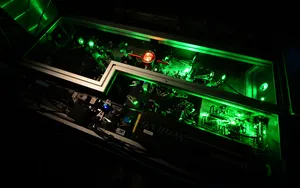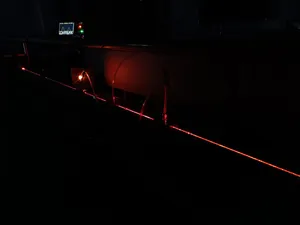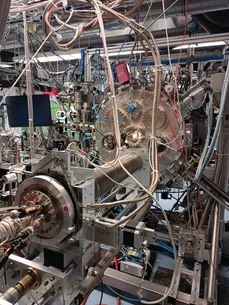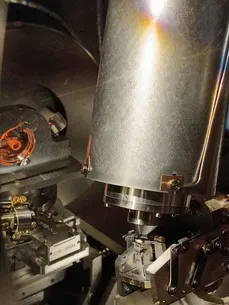Attosecond spectroscopy on molecules and solid state systems
The E11-Attosecond activities aim at investigating processes inside atoms and molecules on the shortest timescale reached so far, the attosecond timescale. One attosecond is 10-18 seconds and compares to one second like one second to the age of the universe. New insight into ever smaller microscopic units of matter as well as in ever faster evolving chemical, physical or atomic processes pushes the frontiers in many fields in science. The interest in these ultrashort processes is the driving force behind the development of sources and measurement techniques that allow time-resolved studies at ever shorter timescales.
Pump-probe experiments turned out to be the most direct approach to time-domain investigations of fast-evolving microscopic processes: A short excitation pulse sets the process going and a probe pulse takes snapshots of subsequent stages of its evolution. Accessing atomic and molecular inner-shell processes directly in the time-domain has until recently been frustrated by the required combination of short wavelengths and sub-femtosecond pulse duration. A solution of this problem, namely the concept of light-field-controlled XUV photoemission allows to substitute either the XUV pump or the XUV probe pulse by a strong few-cycle laser field, in other words, to employ the XUV pulse as a pump and the light pulse as a probe or vice versa. The basic prerequisite, namely the generation and measurement of isolated sub-femtosecond XUV pulses synchronized to a strong few-cycle light pulse with attosecond precision, opened up a route to time-resolved inner-shell atomic as well as molecular spectroscopy with present day sources.
The goal of this research group is to push the frontiers in attosecond technology and to demonstrate its great potential for molecular sciences by providing direct access to the motion of electrons in molecular systems. Efforts shall be undertaken to control and measure the attosecond-scale charge hopping that takes place by the movement of bound electrons between the nuclei of simple molecules. With this expertise at hand we will investigate the most important process of charge migration that occurs in larger and more complex molecules on a femtosecond time-scale. Electron transfer in proteins is a subject of great topical interest. Not only does it play an important role in photosynthesis and in donor-acceptor redox reactions but the extremely rapid transfer of charges and excitation energy often serves as an energy pump for biological systems. In these complex systems a charge transfer may solely be driven by electron correlation. A created hole can migrate through a molecular system on a femtosecond timescale. The extremely fast response at the beginning of the process happens on an attosecond timescale and have not been time-resolved until now. We hope to gain new insight into these processes that are relevant to a large field of science.



